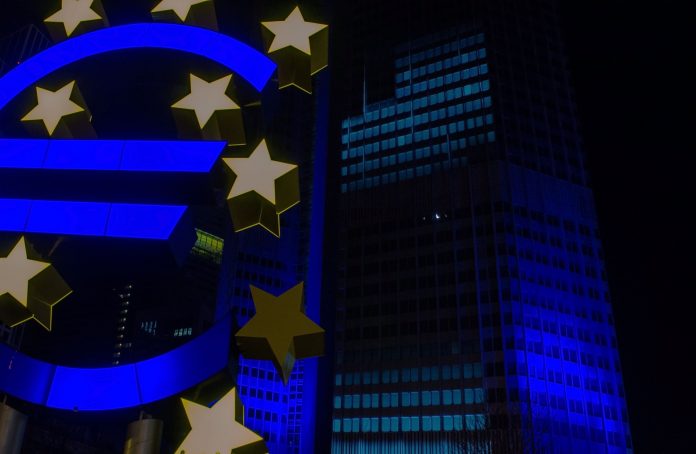By Elena Leontjeva, President and Co-Founder of the Lithuanian Free Market Institute (LMFI)
This Thursday, the European Central Bank (ECB) has scheduled a meeting to once again increase interest rates . After a two-time raise, the base interest rates in the Eurozone are now reaching 1,25%. They may reach 2% by the end of this week.
For businesses and households, this disrupts plans that have been tied to long-held extremely low retail interest rates and negative basic interest rates. Raising interest rates further exacerbates the skyrocketing costs that businesses cannot fully pass on to the end consumer. This move may be another fatal mistake of the Eurozone’s monetary institution.
Raising interest rates is presented as an inevitable measure that may curb rampant inflation. In the Eurozone, the annual inflation rate was 6 % in February (already prior to the war in Ukraine) and 10 % in September 2022. Yet, in some countries it is much higher. My native Lithuania is one of the extreme cases. There, the price growth reached 14 % in February and 24 % annual rate in September 2022.
The ECB as the actor responsible for inflation
The blame for this rampage lies with the European Central Bank: Since the beginning of the pandemic, the monetary base, which represents the central bank’s contribution to the multiplication of money, has doubled.
Money supply M3, which is the main trigger of inflation, reached 25 % in Lithuania by the mid of the pandemic. In the Eurozone it peaked to nearly 13 % at the same time.
This has given much room for prices to increase, apart from other factors, like the disruptions of supply chains, the energy crisis, war, and other fatal factors. Witnessing that inflation was well above expectations, ECB leaders then promised to take restrictive monetary policy measures.
Thanks to the incompetent #ECB Chief #ChristineLagarde, the ECB ignored the money supply (M3). It reached an all-time high in July 2022. As a result, inflation in the #eurozone rose to an unprecedented 9.1%/yr in August.https://t.co/KVndXxiAxb
— Steve Hanke (@steve_hanke) September 2, 2022
The ECB’s two options to fight inflation: to hike rates or to reduce the money supply
Theoretically, there are two such measures the ECB can take to fight inflation: raising interest rates and reducing the money supply through open market operations.
The latter would directly reduce the money supply and price growth. This measure would require the ECB not to inject money back into circulation, but rather to “sterilise” it when the bonds it has acquired have matured and are redeemed.
However, the ECB will not only continue its open market operations, it has also come up with a new measure under the fancy name of the “transmission protection instrument“, aptly called the bazooka by the President of the Bank of Lithuania.
The end of negative rates: #ECB raises main refinancing rate by 50bps to 0.5%; Depo rate from -0.5% to ZERO. ECB unveils new crisis tool called Transmission Protection Instrument (TPI). ECB crisis tool purchases are not ‘restricted ex ante’ pic.twitter.com/JU28fBOr9K
— Holger Zschaepitz (@Schuldensuehner) July 21, 2022
The tool is designed to combat market fragmentation, which is to say, to counter differences in the financial sustainability of Eurozone members once they express themselves in diverging interest rates.
The bazooka will basically be used to shower countries in precarious financial situations, like Greece and other Southern destinations, with money. This means that the most indebted countries non-compliant with the European Stability and Growth Pact (SGP), which enshrines the Maastricht criteria, will be supported by the increased ECB financing. In sum, the ECB expects to bring down the interest rates on the Southern countries borrowing – so that Italy’s interest rates on its debts would be about the same as those of disciplined Germany.
Good Morning on #ECB day from Germany where key interest rate should be at 6.4% & so 5.9ppts higher than current rate, acc to Taylor Rule w/German core #inflation at 3.4% & unemployment below NAIRU. ECB rates should be 7.6ppts higher for entire Eurozone & 6.7ppt higher for Italy. pic.twitter.com/JT9pMfZKdW
— Holger Zschaepitz (@Schuldensuehner) September 8, 2022
It is clear that this new measure is not a part of a restrictive monetary policy, and is, on the contrary, an expansionary one. What does this signal to national governments? Although the Stability and Growth Pact stipulates that countries which fail to comply with the Maastricht criteria can be penalized by up to 0.2% of GDP and additional amounts of up to 0.5% of GDP, no penalties have been ever imposed.
In today’s context of unprecedented inflation and “market fragmentation”, it is worth asking who has taken responsibility for the fact that the debts and deficits of Eurozone member states are chronically rising and that ever more countries are failing to comply with the agreements bound to ensure the sustainability of the Euro?
To fight inflation, the ECB is putting the burden mostly on businesses, households and financially responsible countries, instead of profligate governments
As a result of the ECB’s policy choices, the burden to fight inflation will mostly fall on businesses and households, who will see their loans become more expensive, even though they have kept financial discipline. Having already suffered from the ECB’s expansionary monetary policy and the resulting price increases, they will now also be hit by restrictive monetary policy and higher interest rates.
When the ECB talks about “taking any measures”, one can see that its restrictive measures are primarily aimed at the private market agents. The measures will also affect financially disciplined countries, while chronically undisciplined ones will be subject to the reverse, expansionary monetary policy and lower interest rates. This implies large-scale and unprecedented redistribution.
Editorial in Finnish daily @taloussanomat slams the @ecb and @Lagarde:
"Italy receives, and Finland pays."https://t.co/QfOJ5IkwW0 #Eurozone pic.twitter.com/0Rk6V7knTe
— Pieter Cleppe (@pietercleppe) October 24, 2022
The ECB has cornered itself
Today, the ECB finds itself in a trap. It is impossible to keep interest rates negative, yet increasing interest rates may completely freeze the cooling European economy, which is losing competitiveness due to the geopolitical situation and the energy crisis.
As a consolation, one may be reminded that while inflation is this high, the increased interest rates are still negative in real terms. However, negative or positive, these rates do not reflect the real market situation: the price of borrowing money, which may be called the fundamental price of all prices, is no longer determined by the market.
It is governed manually by the European Central Bank, which intends to, as it admit itself, “take any measures”. After it has lowered the interest rate artificially, thereby encouraging people to go ahead and to hurry up both in production and consumption, it is now suddenly putting the handbrake on. In any case, therefore, the European Central Bank is to blame for the crisis.
Disclaimer: www.BrusselsReport.eu will under no circumstance be held legally responsible or liable for the content of any article appearing on the website, as only the author of an article is legally responsible for that, also in accordance with the terms of use.













